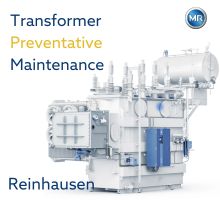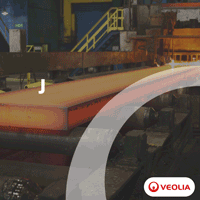Posco Restarts 3rd Gwangyang Blast Furnace
12/11/2007 - Posco restarted the 3rd blast furnace at Gwangyang Works following a successful 55-day repair campaign.
Posco took another step toward building its 33-million-tonne/year production system by restarting the 3rd blast furnace at Gwangyang Works on November 30, following a successful repair campaign. Over 200 people attended the ceremony for setting fire to the blast furnace, including CEO Ku-Taek Lee, Posco employees and executives, and various partnerships.
As part of the repair campaign, the main body of Gwangyang Works’ 3rd blast furnace was extended 21%, from 3800 cubic meters to 4600 cubic meters, so that it can produce 3.85 million tonnes—650,000 tonnes more than its production volume prior to the repair work. Posco undertook the expansion in an effort to provide a solution to the lack of domestic steels.
The 3rd blast furnace started its first campaign in December 1990, and subsequently produced nearly 52.95 million tonnes of iron over the ensuing 16 years and 10 months. The factory completed repair work on the 3rd blast furnace in record time—11 days earlier than the planned 66 days, beating the 58-day world record for shortest repair period (previously held by Posco’s Pohang Works) by 3 days. Gwangyang Works reduced the repair period by conducting more than 60% of advance repair work while the blast furnace was still in operation, based on its stable facilities and operation technologies. The company also renovated the engineering method for dismemberment, and altered the method for piling up furnace parts to blocks.
Posco also modified the exterior cooling system to prolong the average lifetime of the furnace from 15 years to over 20 years. The company also curtailed the investment cost by 17% compared to Gwangyang Works’ 2nd blast furnace, which was last repaired in 2005, by employing the 6 sigma technique and other process modifications.
Posco Engineering & Construction Co., Ltd., Posco Refractories & Environment Co., Ltd. (POSREC), and Posco Architects & Consultants (POS-A.C.) all supported the rapid repair of Gwangyang Works’ 3rd blast furnace.
Posco’s 33-million-tonne/year production system also features the new 1.5-million-tonnes/year Finex facilities that were completed in last May.
As part of the repair campaign, the main body of Gwangyang Works’ 3rd blast furnace was extended 21%, from 3800 cubic meters to 4600 cubic meters, so that it can produce 3.85 million tonnes—650,000 tonnes more than its production volume prior to the repair work. Posco undertook the expansion in an effort to provide a solution to the lack of domestic steels.
The 3rd blast furnace started its first campaign in December 1990, and subsequently produced nearly 52.95 million tonnes of iron over the ensuing 16 years and 10 months. The factory completed repair work on the 3rd blast furnace in record time—11 days earlier than the planned 66 days, beating the 58-day world record for shortest repair period (previously held by Posco’s Pohang Works) by 3 days. Gwangyang Works reduced the repair period by conducting more than 60% of advance repair work while the blast furnace was still in operation, based on its stable facilities and operation technologies. The company also renovated the engineering method for dismemberment, and altered the method for piling up furnace parts to blocks.
Posco also modified the exterior cooling system to prolong the average lifetime of the furnace from 15 years to over 20 years. The company also curtailed the investment cost by 17% compared to Gwangyang Works’ 2nd blast furnace, which was last repaired in 2005, by employing the 6 sigma technique and other process modifications.
Posco Engineering & Construction Co., Ltd., Posco Refractories & Environment Co., Ltd. (POSREC), and Posco Architects & Consultants (POS-A.C.) all supported the rapid repair of Gwangyang Works’ 3rd blast furnace.
Posco’s 33-million-tonne/year production system also features the new 1.5-million-tonnes/year Finex facilities that were completed in last May.



-(220-x-200-px)-(130-x-130-px)-(220-x-200-px).jpg?lang=en-US&ext=.jpg)
.gif?width=200&height=200&mediaprotectionhash=ddb07947ad3b4ab959a83714461eccd5c6895f370695eb035a9ff7aa736f8ad9&ext=.gif)





